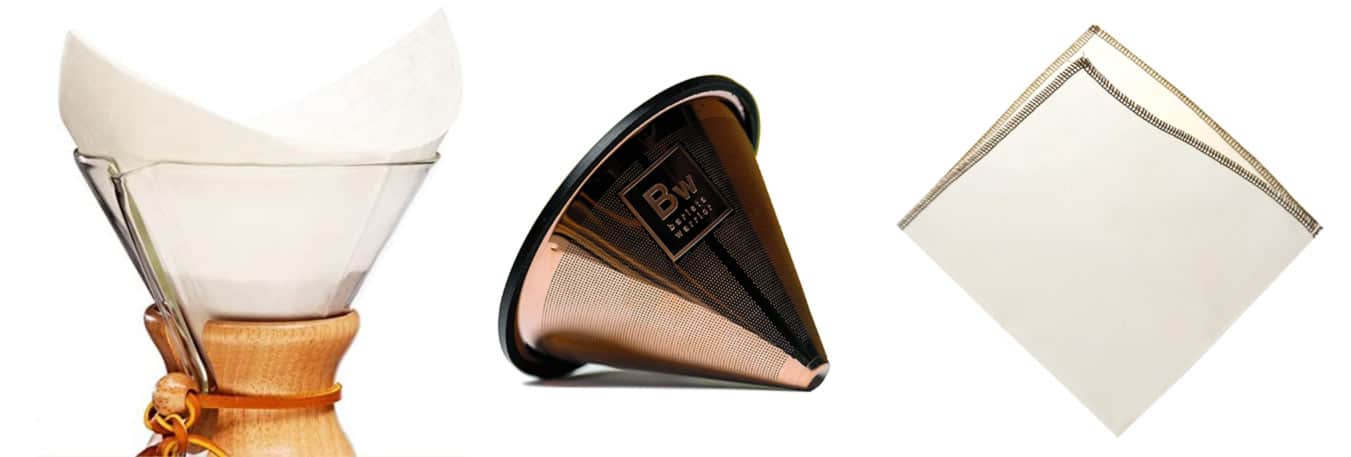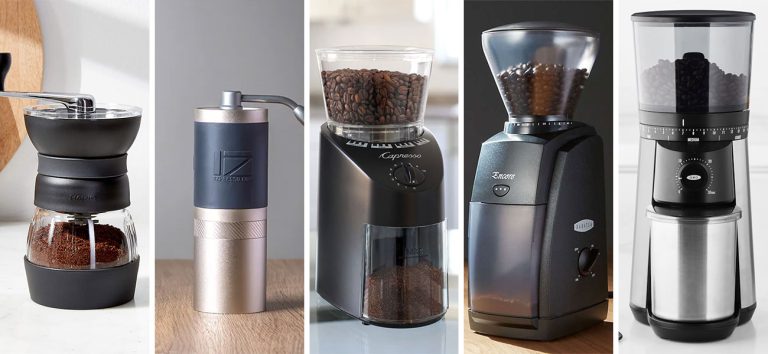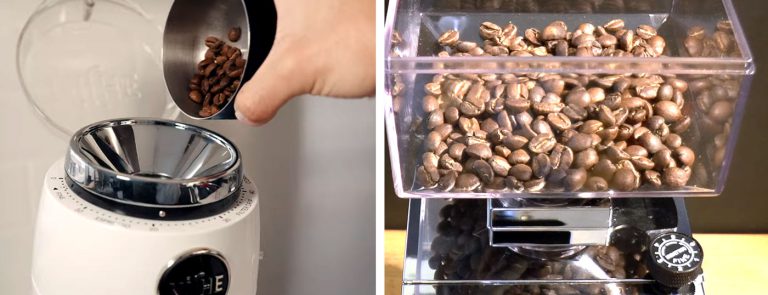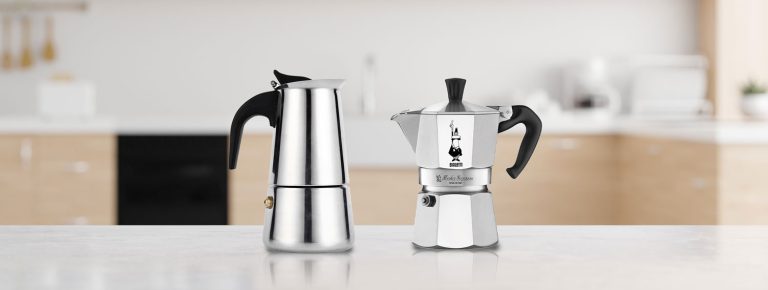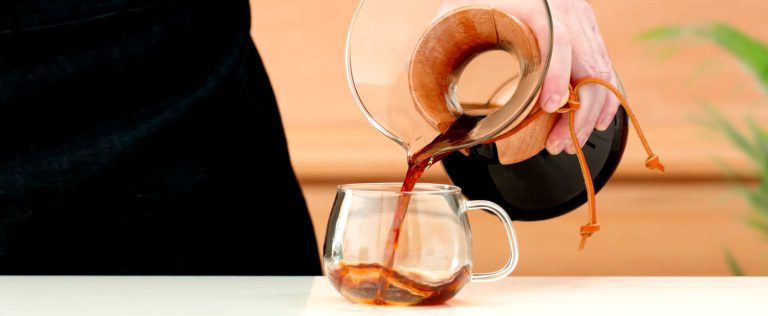Exploring Chemex Filter Types: Finding the Perfect Coffee Filter for Your Brew
The multivariate nature of brewing with a Chemex can be confusing. Grinds? Ok. Water? Ok.
But why are there so many Chemex filter types? And how are they different? I now know what I didn’t years ago, and I want to help you.
In this article, we’ll explore all aspects of Chemex filters:
- Paper or reusable?
- Natural or white?
- Circles versus squares?
Let’s dive into each option to discover which is best suited for your particular taste preferences and lifestyle.
Understanding Chemex Paper Filters
Chemex filters are designed with a particular purpose in mind – extracting the best flavor from your coffee beans.
This is achieved using 20-30% thicker and denser paper material than conventional drip coffee maker filters. The design of these specialized filters ensures that most of the oils and sediment remain contained within them, allowing only the flavorful liquid to pass when you brew your coffee.
The result? Deliciously smooth and balanced coffee, every time. Well, sort of… as long as you get your Chemex brewing technique down, your scale is precise, you know the magic ratio and the proper water temperatures.
But what makes the best Chemex filter stand out from other types of filter papers?
Here’s a closer look at some of their key features:
| Feature | Description |
|---|---|
| Size | Larger than standard filters to provide greater surface area for maximum extraction potential. |
| Construction | Three-layered construction with a special folding technique for excellent filtration without sacrificing body or taste quality. |
| Paper Quality | Laboratory-grade paper filters all unhealthy and bitter elements. |
Chemex filters come in all shapes and forms. From oxidizing processes to water baths, a square filter with points poking out of the top for easy removal, or a circle filter paper sitting flush; they function exactly the same and it’s really a matter of individual taste.
Let me walk you through my experience with different Chemex filters.
Chemex branded filters
One thing I absolutely love about the circle-shaped paper filter is how perfectly it fits onto my Chemex brewer for consistent extraction every time. Pre-folded circles are especially convenient if you’re looking for an easy brewing experience without any mess or spills.
If you get unfolded ones, read my guide on how to fold Chemex filters.

On the other hand, square filters come in handy when preparing large amounts of coffee at once – perfect for hosting guests or coworkers. They make clean-up super simple since those little “wings” on the sides give me peace of mind knowing my filter won’t collapse into the spout mid-brew causing hot messes everywhere (literally).
While the circle and square types are more common, you’d have no choice but to use the half-moon-shaped ones if you own a 3-cup Chemex or their Funnex variant. The function remains the same but the folding technique is altogether different since you have to form a cone.
The half-moon filter may look good aesthetics wise but it was quite difficult to get it right. I often end up with coffee grounds behind the folded part. What did the trick for me was:
- Folding the paper filter clockwise until the folding crease is to the left of the spout.
- I also tried pouring the water counterclockwise so the folded part can stay put.
| Feature | Chemex Pre-Folded Filters | Chemex Unfolded Filters |
|---|---|---|
| Shape | Circle & Square | Circle & Half Moon |
| Color | Natural & White | Natural & White |
Natural vs. White
As I experimented with Chemex filters, I found that the natural ones left a distinct earthy-papery flavor in my coffee. However, I did discover that rinsing unbleached filters with hot water several times before using them can eliminate this taste. Yes, that is an extra step, so if you don’t have lots of time, the bleached options are more convenient.
I also did some research and learned that Chemex uses a hydrogen peroxide oxygen cleansing process instead of bleach to whiten their filters. However, when it comes down to taste, there’s only a slight difference between using bleach versus what Chemex used.
| Feature | White Filter Paper | Natural Paper |
|---|---|---|
| Cleansing Step | Oxidizing cleansing baths plus hot baths | Hot baths only |
| Color | White | Retains natural brown color |
If you don’t want to use disposable paper coffee filters, you can use metal or cloth filters with your Chemex.
Metal Chemex Filters
I was a bit hesitant to try out metal filters since I didn’t want the hassle of cleaning up after every brew, but the zero-waste concept was tempting so I decided to give it a try.
I found that the metal filter allows more oils to pass through which gives my cup of joe an earthier flavor, which is perfect for my darker roasts.
On the other hand, if you’re the type who loves lighter roasts or prefers your coffee to have more clarity and brightness, then stick with the trusty ol’ paper filters. That is how the brewer was invented in the ’40s, and there is a reason why it hasn’t changed much since.
But what about finding something in between? Well, I have a fine sieve, and sifting out the small particles gave me something less cloudy even when it still had a heavier mouthfeel. But I only did that once, it was overly time-consuming.
| Type | Pros | Cons |
|---|---|---|
| Metal | Aromatic experience with rich body, sustainable | Can be challenging to clean, limited compatibility (no one size fits all) |
| Paper | Vibrant flavors and a clean cup | Not reusable, which can incur more costs in the long run |
Able Kone Filter
If you want to go the metal filter route, the Able Kone is a good option.

| Product | Material | Compatibility | Notes |
|---|---|---|---|
| Able Kone Coffee Filter | Stainless steel and food-safe polymer support ring | 6, 8, and 10-cup Chemex coffee makers | Faster flow, lets fine sediments through |
My first observation with the Kone is that it’s finicky yet consistent if you avoid pouring water through the side. Sadly though, this happens quite often as most of my coffee manages to escape through the sides instead of passing through the bottom – negatively affecting my brew quality.
However, when everything goes according to plan, it flows faster than a paper filter while giving me an oily French press-like taste experience contrary to Chemex’s clean profile. Nevertheless, I liked having the option of using non-brand filters on days when I run out especially since stocks are quite hard to find in my area. I always have to order online.
Barista Warrior Filter
Moving onto Barista Warrior, following instructions carefully makes all the difference in achieving an excellent cup. Pouring water over the grounds to let them “bloom” for about 30-45 seconds really allowed me to taste deeper notes with richer flavors – definitely worth taking note of.

| Product | Material | Compatibility | Notes |
|---|---|---|---|
| Barista Warrior Filter | Copper or titanium-coated stainless steel | 6, 8, and 10-cup | Double filtration system, silicone ring, Hario V60 compatible |
This filter has a double filtration feature, which keeps more fine particles out than the Able Kone.
As for using this filter specifically in combination with Chemex, there were no concerns at all. The silicone ring around the top kept everything securely in place while also being super simple to remove when cleaning became necessary.
It works with the Hario V60 just the same.
Something important I learned though: just rinsing it off does not do the trick. I was a bit skeptical when there was visible sediment trapped between the two filters, but luckily the sponge took care of everything in no time.
Cloth Chemex Filters
While paper offers a clean cup and metal adds body, cloth strikes the perfect balance by letting more oils through without leaving any sediment behind. This results in a medium-bodied cup free of sediments and rich in aromatic oils.
| Type | Pros | Cons |
|---|---|---|
| Cloth | Efficient filtration lets through more oils than paper | Can be bleached with chlorine, Inconvenient to clean |
| Paper | Retains more flavor and aroma than cloth, easy to clean | Can absorb oils and clog easily, can disintegrate in water |
But let me tell you – maintaining cloth filters is not easy. It actually is quite an effort, since their potential for rancidity can ruin your coffee (and mood). To avoid this, I have two tips I got from James Hoffman depending on your usage. For extra measure, I also like to rinse them with unscented Oxiclean treatments at least once a month.
For regular use: After rinsing, store it in a glass filled with water in the fridge to prevent mildew and foul smells.
For rare use: After rinsing, store it in a Ziploc bag in the freezer.
Coffee Sock

| Product | Material | Compatibility | Notes |
|---|---|---|---|
| CoffeeSock Chemex® Style filters | Certified organic cotton | X6 & X6HM for 6-13 Cup Chemex, X3 for 3 Cup Chemex, FUNN for Funnex Pour Over | Crisp, rich, and robust |
For its positive points, I loved how it’s well-stitched and double-layered with stiff woven fabric so it’s less likely to collapse in the pouring channel.
In terms of flavor, it has the clarity of pour-over with the body of a good cup of drip.
But even after following the initial instructions of boiling fresh water for 10 minutes before use (which supposedly tightens up the cloth weave), I still found that water drained a bit faster through this filter compared to paper ones. This resulted in a weaker brew all around as there was less time in contact with the grounds.
I only tried it a few times though, so you results will vary. I know there are a lot of very positive reviews of this product on Amazon, so it may have been my technique.
As for cleaning, well, you have to do it. The manufacturer advises a weekly boiling (if used 1x daily), and replacement of the 2 pack within a year. Not my cup of tea to tell you the truth.
Factors to Consider When Choosing a Chemex Filter
Let’s talk about taste. Different filters will provide different flavor profiles depending on the brew style and grind size.
- Paper filters tend to have more natural sweetness.
- Cloth or metal filters produce more decadent flavors with a deeper body.
Environmental impact is another important consideration when selecting a filter.
- Reusable models like metal and cloth filters require regular maintenance but make up for this extra effort by reducing waste from paper consumption.
- On the other hand, paper filters might be easier to dispose of but come with higher amounts of packaging materials that ultimately end up in landfills.
Cost and budget also need to factor into your decision-making process since some types of filters can be more expensive than others.
- Reusable options like metal and cloth are usually pricier upfront but cost less in the long run.
- On the other hand, paper filters might cost less per package; however, the price difference isn’t so drastic anymore when you factor in how frequently they need to be purchased.
Finally, there are health benefits to consider when choosing a filter type for your Chemex.
- Paper filters are more effective at extracting diterpenes when compared to metal or cloth filters. Diterpenes inhibit the cholesterol-regulating receptor in the intestines, increasing the risk of high blood pressure, heart attack, and stroke.
Frequently Asked Questions
This turned out to be a pretty long article, but you may still have a few questions about Chemex filters. Here are answers to the most common ones.
Conclusion
After exploring the different types of filters available for Chemex coffee makers it’s clear that each filter type has its unique benefits and drawbacks. Various filters can affect the taste as well as filtration performance and durability.
Experimentation is key to finding the perfect fit for your home brewing needs. Consider factors such as taste preferences, environmental impact, and cost considerations when selecting.
And if you are still unsure about which filter to choose or have any questions about using Chemex brewers and filters – don’t hesitate to leave a comment below this article so I can help with whatever advice I can offer.

